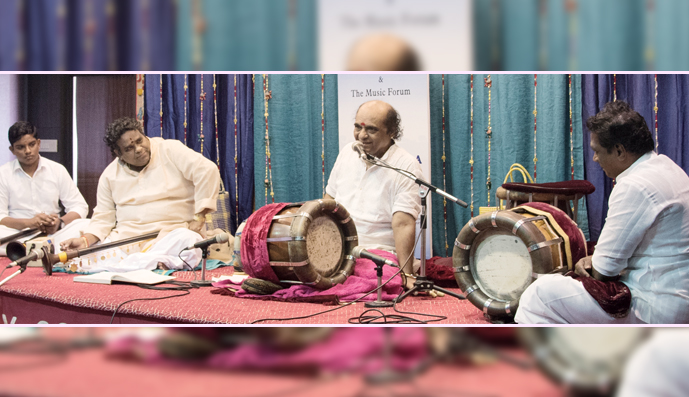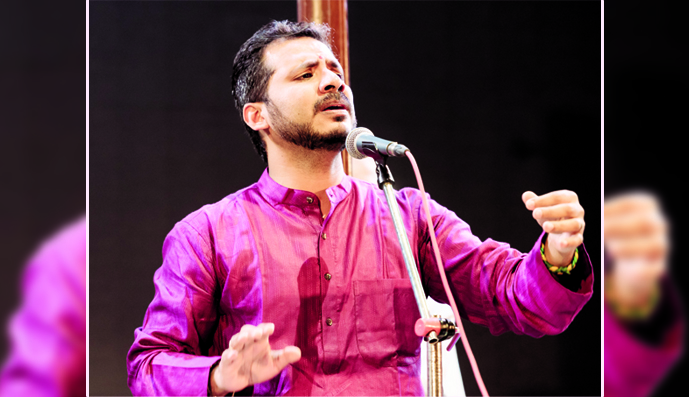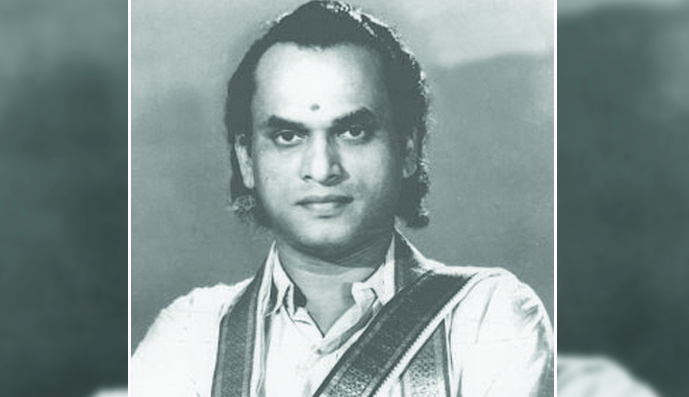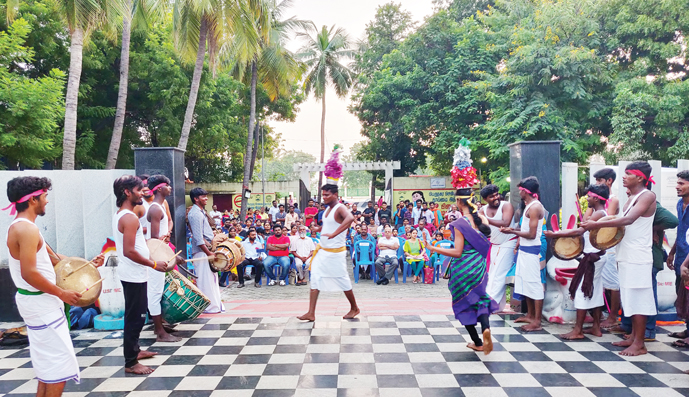MORNING SESSIONS Vadya Sammelan was the theme of the annual Lec Dem Mela organised by Sruti and The Music Forum on 7 and 8 December 2019 at the Arkay Convention Hall in Chennai. With dwindling audiences for regular instrumental music concerts, the two-day event attempted to generate interest by focussing on the origin, history, styles, and intricacies of several instruments. After the invocation Nadanilai kandu in Gayakapriya rendered by young students, the series was inaugurated by Veena E. Gayathri, former Vice-Chancellor, Tamil Nadu Music & Fine Arts University. In her inaugural address, she expressed her concern about the challenge the acoustic veena is facing from the electronic veena. The traditional veena made from the wood of the old jackfruit tree produces the necessary vibration and the divine sound. The electronic veena, on the other hand, picks up only the sounds from the strings attached to the magnetic mike, and thus the full potential of the instrument is not drawn, said Gayathri. As such, the music emanating from both the veenas are not comparable. She called upon organisers to conduct separate veena festivals for the acoustic veena and the electronic veena. After her inaugural speech, the endowment scholarships instituted in memory of Manna Srinivasan (music critic and roving editor of Sruti) and rasikas Meenakshi-Ramakrishnan were presented to deserving students M. Madhavan (tavil), L. Viswanathan (music), and P.P. Athul Balu (dance). In the first lecdem, tavil maestro Haridwaramangalam A.K. Palanivel demonstrated various types of mallaris played during temple rituals. Traditionally, mallaris were played only in Gambheera Nata, although other ragas are also now being used sporadically.
SRI KRISHNA GANA SABHA Namasankeertanam The eco-friendly environs, including the cane chairs that might have witnessed a thousand vintage concerts, offer an old-world charm to Sri Krishna Gana Sabha. Located in the aptly named Maharajapuram Santhanam Road in T. Nagar, the pioneer institution offers a literal extravaganza of music and dance for rasikas during the season. The main auditorium Nalli Gana Vihar, the mini (Kamakoti) hall, and the Meenambiga canteen cater to the tastes of a diverse audience. If the main hall is packed to capacity in the early mornings of Margazhi, the event has to be the namasakeertanam of Brahmasri Vittaldas Jayakrishna Dikshitar of Govindapuram, singing and talking about ‘Nama mahima’, a much-needed medicine for the current strife-ridden milieu.
In the history of south Indian performing arts, there perhaps exists no parallel to the case of M.K. Thyagaraja Bhagavatar (1910 - 1959) where the tremendous popularity of one facet of an artist is matched by a near oblivion of another. So high is his stature in the history of Tamil cinema that he is popularly regarded as the first ‘superstar’, while the general awareness about him as a Carnatic concert singer is very low. There are some photographs of MKT in concert, but the unavailability of even one recording of his concerts is responsible for the fading out of this aspect of his artistic personality. In MKT’s autobiographical sketch published in a special issue of Thirai Ulagam in 1948, he has shared memories, as a little boy, of hearing concerts in Tiruchi and, being then ignorant of the nuances, pining to appreciate the music as the learned did.
Chennai matches the cultural ethos of the hinterland; as a modern city with a distinct connection to its roots, amalgamating the influences of its neighbouring regions and those from the West into its vibrant Tamil cultural traditions. In this bustling hub, the people of the city have developed an inimitable system of patronage of art and culture. Among the most visible of such support to the fine arts, is the December music ‘season’—a stimulating and almost pilgrim-enthused fervour of over 3000 concerts in about 45 days! It is this resplendent history which has enabled the city to be recognised by the UNESCO as one of the Classical Cities of Music of the world. In 2017, the Greater Chennai Corporation submitted its application, bringing out the bedrock of folk and classical arts and the sustained voluntary championing of these artists by civic society and philanthropic mercantile groups, both large and small. This was supported by materials from a cross-section of organisations involved in the furtherance of the arts.
CONTENTS
6 Sruti box
8 News &
notes
12 Birthday calendar
14 Spotlight v The
state of instrumental music
17 Lec Dem Mela 2019 v Focus on instruments
22 Season awards
24 Season 2019-20
v Sri
Krishna Gana Sabha
v The
Music Academy
v Navadhisha:
exploring syntax for dance
36 A peep into the past v M.K. Thyagaraja Bhagavatar
41 New initiative v UCCN: showcasing arts in public
spaces
44 News & notes (continued)
46 Snapshorts
48 Wellness v Yoga
for dancers (part 2)
50 From the Editor
Front
Cover: The music season (photos
by Hemamalini S. and Akira Io)
No. 425






